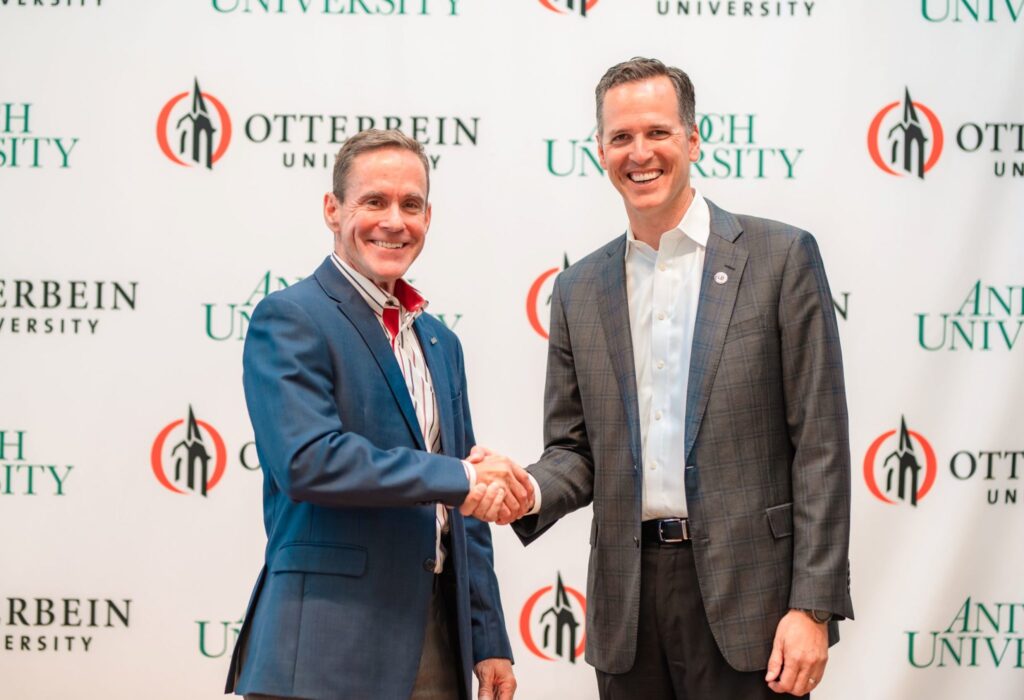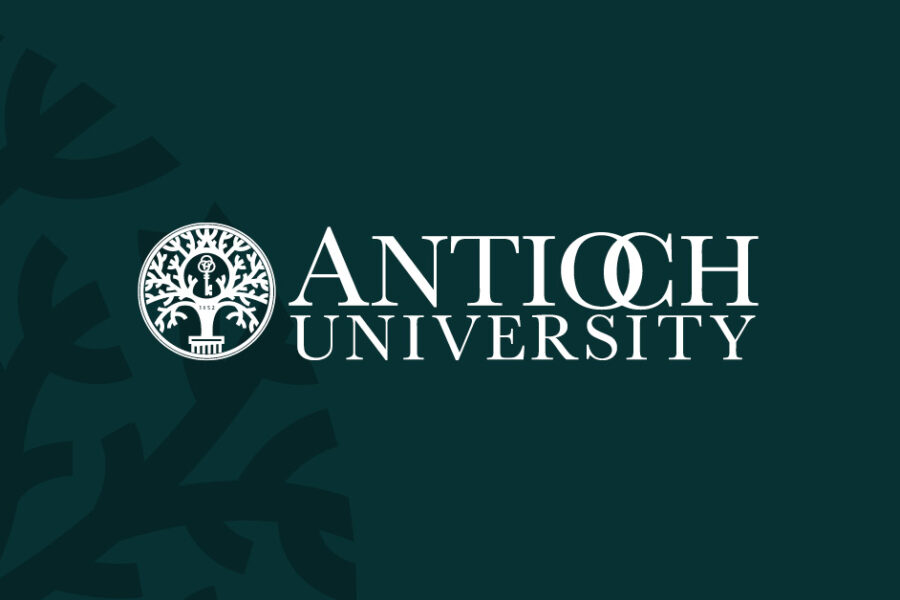New national, nonprofit, university system will educate students for careers and to advance social justice, democracy, and the common good.
On July 14, 2022, Antioch University and Otterbein University announced their intention to affiliate and create a unique, national, nonprofit university system focused on educating students not only for careers, but to advance social justice, democracy, and the common good. By affiliating with Otterbein, Antioch joins an institution that aligns on many levels with Antioch’s mission, history, and reputation for advancing social, racial, and environmental justice. This new chapter for both institutions will build on Antioch’s 170-year history as a pioneer in adult education and national higher-education systems.
“Plans extend well beyond creating a two-party education system,” explains Antioch’s Chancellor, William R. Groves. “Rather, Antioch and Otterbein are the founding members of a system that will grow to include other colleges and universities with similar histories and missions.” As Groves says, “This is the first system to be created in which the affiliate institutions are bound by a common mission of educating for social justice, and a commitment to building and preserving democracy. This system could not come at a more compelling inflection point in our nation’s history. The affiliate members will become subsidiaries to an overarching parent organization established by the founding members. That parent will have a fiduciary board comprised of members from the founding affiliates.”

The system will bring about significant growth by leveraging what each institution does best. Otterbein University will continue to be focused on traditional age undergraduate students, while Antioch University will focus on adult and graduate students. The affiliation creates a number of important synergies in which one plus one equals more than two. Otterbein will be able to offer its former students who did not complete their degrees a pathway for degree-completion. Current undergraduate students will have the opportunity for accelerated pathways for completing both their bachelor’s degree and a master’s degree. These 3+2 or 3+3 programs will significantly reduce the cost of degrees and provide incentives for Otterbein University undergraduate students to pursue an Antioch graduate degree. Otterbein currently has graduate nursing programs. Those programs can be expanded to Antioch campuses. Conversely, Antioch has graduate programs that can be brought to Otterbein’s Ohio campus, especially master’s and doctoral degrees in education, business, counseling, psychology, therapy, and environmental studies.
Moreover, as a national system we will be both nimble and scalable and better positioned to address the needs of industry in our states and across the nation, providing accessible and affordable workplace education programs including full degree programs and stackable certificates that can be taught at the employer’s locations. These programs are mutually beneficial to the employer and the employee/student; they help the employer build and retain talent and, because the employer often covers part of the tuition and fees, they help the student by reducing the cost of the degree. “We are already in conversations with some major employers and Fortune 500 companies headquartered in Columbus about developing higher education programs tailored to their needs,” explained Otterbein University President, John Comerford.
Antioch and Otterbein have mapped out over $20M in programmatic growth opportunities over the first several years, and there is work underway to identify others. Again, this innovative system will allow the universities to expand degree offerings, offer programs in more locations nationwide, and provide innovative learning modalities including online, low-residency, and hybrid settings. It will create new opportunities for student engagement across institutions, enhance capacities, and contain costs through shared services and improved technologies.
President Comerford emphasizes the importance of collaboration in creating this system. “The independent university system model is being developed to allow universities to move from being competitors to collaborators,” he says, “to better serve students, our communities, and our nation, while preserving their own institutional identities and cultures.”
The July announcement, held on Otterbein’s Westerville, Ohio campus and livestreamed to Antioch’s community across five campuses and the entire world, came after months of due diligence by both institutions to confirm the alignment of missions and academic offerings and to outline the ways in which learners, their campus communities, and their greater communities will benefit from the new system.
The agreement allows for formal planning for the strategic alliance by both institutions as a first step in creating the independent university system, with discussions of additional mission-aligned affiliate partners already underway. The parties are now finalizing their due diligence and will shortly begin the process of obtaining all necessary regulatory approvals. Final system approval from accreditors and federal and state regulators is expected to take about a year. New programs could be offered through the affiliation as early as the fall of 2023.
“But this affiliation is meant to be far more than a new business plan,” explains Chancellor Groves. “Horace Mann understood that America’s universities are democracy’s universities. As a result, higher education owes democracy much more than career preparation. It owes democracy its institutional voice and its commitment to educate students to become critical thinkers, to recognize authoritarianism and fascism and those playbooks used for destroying democracies, to understand the importance of the rule of law, the importance of a free press and free speech, the supremacy of facts and scientific inquiry, the importance of protecting voting rights and free and fair elections, and the need to become actively engaged citizens. These are universal educational imperatives, and higher education must do a better job of teaching them if this democracy is to survive,” explains Groves. “Defending the Constitution and democracy is not a partisan issue. It’s an American value.”
“This unique national university system promises to be a new and profoundly important epoch in the long and venerable history of Antioch University. It advances Horace Mann’s vision in a way that we could not do on our own, in a way that gives our mission, and that of Otterbein University, substantially greater gravitas and meaning,” explains Groves. “Through this vision, Antioch extends in new and important ways its reputation for being an innovative force in American higher education.”
Learn more about the system at antioch.edu/system.
About Otterbein University

Otterbein University was founded in 1847 in Westerville, Ohio.
From its founding it included women as faculty members and students (it was the first in the nation to do so), and it admitted Black students before the Civil War.
Today it is a private university with roughly 2,400 undergraduates enrolled in more than 70 undergraduate majors and 500 graduate students studying in seven master’s programs and a doctorate in nursing practice. Otterbein is nationally recognized for its Integrative Studies curriculum, which blends liberal arts and professional study. Like Antioch, Otterbein is committed to experiential learning and community engagement. Its picturesque campus is just minutes from Columbus.



